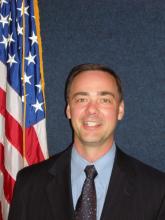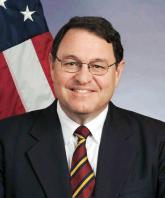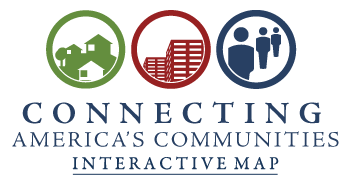Blog
Broadband Construction Season
While stuck in construction traffic the other day, I thought of the old cliché that there are only two seasons – winter and road construction. But after visiting the Central Valley Independent Network’s (CVIN) offices in Fresno, California this summer, I would add broadband construction as a third season.
For CVIN and all other Broadband Technology Opportunities Program (BTOP) projects, summer is a time to build. Whether it’s hanging fiber on utility poles or trenching, plowing, and drilling underground, our awardees and their construction crews are busy at work.
Broadband is a world of extremes: it takes heavy-duty, 10-ton equipment to install fiber strands that are as small as a human hair. It takes months and years of hot, sweaty, dust-filled workdays to build a network that will provide massive amounts of data to end users at speeds measured in millionths of a second. It takes hundreds of man-hours, at a pace of 1000 feet per day to install the fiber that will connect our schools and hospitals with resources on the other side of the planet with just the click of a mouse.
As a Federal Program Officer overseeing a number of our BTOP projects, I’m constantly collecting numbers that gauge progress from my awardees: miles of fiber and conduit installed; crews in the field; targets and milestones for connecting community anchor institutions (CAIs) and so-called last mile service providers – all with an eye toward completing the projects on time and on budget. Despite the weekly conference calls, quarterly and annual reporting, and internal analysis at the program office, there’s just no substitute to getting out in the field to understand exactly what our awardees’ crews experience on a daily basis.
Getting Older Americans Online
NTIA's Broadband Technology Opportunities Program (BTOP) is funding innovative programs across the nation that are working to close the digital divide. And a number of those projects are targeting a group of Americans too often left behind by today's fast-moving technology: seniors.
Broadband can improve quality of life for older Americans in many ways. Online videoconferencing technology can allow seniors to see grandchildren who live on the other side of the country. Medical websites can provide easy access to everything from health and wellness tips to information about illness and disease. Telemedicine and remote monitoring can enable elderly patients too frail to travel to consult with doctors at distant hospitals. Social media tools can combat isolation and even serve as a lifeline to the outside world.
What’s more, at a time when many Americans are working into their retirement years, Internet job listings and online employment applications – as well as Web-based training programs and classes - can help seniors retool for today’s economy.
But not enough older Americans are sharing in the benefits of broadband. NTIA, in collaboration with the Census Bureau, conducts some of the most extensive survey work on broadband adoption trends in the U.S. Our most recent published survey, in October of 2010, found that only 45 percent of U.S. households headed by someone 65 or older had broadband. That compares with 72 percent of households headed by someone ages 45 to 64, and 77 percent of households headed by someone ages 16 to 44.
BTOP is helping close this gap. Roughly 20 digital inclusion projects that receive funding through the Recovery Act program provide services targeted at seniors in some capacity. We’d like to tell you about three in particular:
Driving broadband adoption in the Latino community
I recently had the opportunity to speak to the National Association of Latino Elected and Appointed Officials (NALEO) and the League of United Latin American Citizens (LULAC) about NTIA’s Broadband Technology Opportunities Program (BTOP) and the work it is doing to promote broadband adoption in the Latino community.
A high-speed Internet connection can provide access to everything from online job postings to educational opportunities to valuable healthcare information. But too many Latino households remain cut off from these important benefits.
NTIA, in collaboration with the Census Bureau, conducts some of the most extensive survey work on broadband adoption trends in the U.S. Our most recent survey, in October of 2010, found that 72 percent of White households nationwide subscribed to broadband, compared with only 57 percent of Hispanic households. The survey also found that socioeconomic factors such as income and education do not fully explain the gap. Even after accounting for these factors through regression analysis, Hispanic households still lag White households in broadband adoption by 11 percentage points on a nationwide basis.
So NTIA’s BTOP program is supporting a number of projects specifically intended to benefit Latinos – by funding computer centers in neighborhoods with large immigrant communities, by offering computer training and digital literacy classes in Spanish, and by helping Latino entrepreneurs and Latino-owned small businesses get established online. I’d like to tell you about a few of those projects:
Promoting Digital Inclusion in the Nation's Capital
I recently had the opportunity to participate in a Community Broadband Summit held by the District of Columbia to explore the many ways that broadband drives economic growth, spurs community development and opens up new possibilities in jobs, education, healthcare and other areas.
A high-speed Internet connection and digital literacy skills can provide access to up-to-date job listings and new career paths, to specialized online classes and advanced educational content, to valuable healthcare resources and cutting-edge medical expertise. But even in the nation’s capital, there are still too many residents cut off from these opportunities because they are not online.
The D.C. Office of the Chief Technology Officer, or OCTO, which hosted the recent summit, is working to close this divide. And it is the Broadband Technology Opportunities Program, or BTOP, a Recovery Act program administered by NTIA, that makes OCTO’s digital inclusion work possible.
The District of Columbia is one of the few BTOP grantees across the country administering grant projects in all three categories of the program: network infrastructure, public computing centers and sustainable broadband adoption projects.
• OCTO is building a high-speed, fiber-optic network that will deliver Internet connections of up to 10 gigabits per second to as many as 290 D.C. anchor institutions. These anchors include schools, libraries, healthcare facilities, public safety entities and community colleges – many of which are located in low-income neighborhoods that suffer from high unemployment rates. The new Community Access Network – or DC-CAN – will also expand the District’s existing municipal fiber network, DC-Net, by another 170 miles. When the project is done, OCTO will manage more than 500 miles of fiber.
Building Broadband in Maryland: A Statewide Effort
I recently had the opportunity to participate in a symposium at the Johns Hopkins University Applied Physics Lab that highlighted the benefits that a new high-speed broadband network will bring to schools, libraries, healthcare institutions, public safety facilities and other community “anchors” across the state of Maryland.
Thanks to the Recovery Act, the Maryland Department of Information Technology is overseeing a $115 million grant from NTIA’s Broadband Technology Opportunities Program to build a statewide network that plans to deliver affordable broadband to every one of Maryland’s 24 counties and connect more than 1,000 anchor institutions.
The project – called the One Maryland Broadband Network – is putting down nearly 1,300 miles of new fiber and linking more than 2,400 miles of existing fiber. It will extend and connect three separate systems: the state-run networkMaryland, which was established for public sector use; the nine-jurisdiction Inter-County Broadband Network, which connects government buildings and other anchors across Central Maryland; and a non-profit consortium of rural carriers called Maryland Broadband Cooperative.
When it’s done in late 2013, the One Maryland Broadband Network will supply core infrastructure that local carriers can use to deploy broadband to almost 2 million homes and more than 400,000 businesses, including those in 15 rural counties in Western and Southern Maryland and on the state’s Eastern Shore. The new network will also deliver connections of up to 10 gigabits per second to anchor institutions.
Building Community Networks in Wisconsin
A dozen years ago, a group of technology officials in the neighboring Wisconsin cities of Eau Claire and Chippewa Falls began meeting to share ideas on how to prepare their computer systems for Y2K. The group included officials from the city and county governments, local school districts, community libraries and medical institutions. And while Y2K came and went without incident, it soon became clear that the collaboration had the potential to turn into something much bigger.
Today, that group – called the Chippewa Valley Inter-networking Consortium, or CINC – operates an extensive broadband network that connects 150 schools, libraries, hospitals, clinics, technical colleges and university campuses across the Eau Claire and Chippewa Falls region. And now, the Broadband Technology Opportunities Program is expanding that original “community area network” and replicating its success in three other Wisconsin communities that see CINC as a model for establishing a 21st Century communications infrastructure.
Building Community Capacity through Broadband, or BCCB, is using $30 million in Recovery Act funding to lay down more than 600 miles of fiber that will extend the network in Eau Claire and Chippewa Falls and create new community area networks in Platteville, Wausau and Superior. The public-private project is being spearheaded by the University of Wisconsin-Extension program, but has many partners, including dozens of local governments and school districts.
White House to Honor NTIA Recovery Act Broadband Grantees as Innovators in Infrastructure
NTIA's Recovery Act broadband infrastructure projects are connecting communities across the country to high-speed Internet, creating jobs, and supporting economic growth.
Tomorrow, the White House will recognize two individuals who helped develop and are now implementing broadband infrastructure projects that are key to revitalizing their communities. Joe Freddoso, President and CEO of MCNC, and Donald Welch, President and CEO of Merit Network Inc, will be among 11 local leaders honored at the White House as “Champions of Change” who are using innovative techniques to develop valuable projects helping to improve America’s infrastructure.
Merit Network and MCNC both received Recovery Act grants from NTIA for broadband infrastructure projects that are currently underway and connecting community anchor institutions, including schools, libraries, and hospitals, to high-speed Internet. Under the leadership of Welch and Freddoso, Merit and MCNC have put hundreds of people to work and are laying the groundwork for sustainable economic growth and improved education, healthcare, and public safety. These projects emanated from the communities where they are being carried out; each project is designed to best meet the needs of local people and institutions and to get the biggest bang for every grant dollar. Merit’s project is serving Michigan’s Upper and Lower Peninsula, and MCNC is serving communities across North Carolina.
BTOP Case Study Five: Bill Callahan, Connect Your Community Project Director, OneCommunity
As part of our BTOP series: Tales from the Front Lines, today we are highlighting Ohio sustainable broadband adoption grantee One Community.
OneCommunity, a non-profit broadband provider in Northeast Ohio, is using Recovery Act funding to expand innovative broadband adoption work it is doing in Cleveland and replicate the program in seven other communities in Ohio and four other states. The Connect Your Community (CYC) project provides computer classes and broadband training, as well as low-cost equipment and help finding affordable Internet access, to get low-income households online. One key to the program is the CYC Corps, a team of staffers hired in each community to teach computer and Internet basics to others, who are using those skills to look for jobs or even start their own businesses online. Working with eight local partners, OneCommunity says it is on track to produce 26,000 new broadband adopters. (OneCommunity is also using another Recovery Act award to upgrade and expand its fiber-optic network, which connects anchor institutions in Northeast Ohio).

Computer training at a public housing site in Lorain, Ohio.
BTOP Case Study Four: Andrew Buss, Director of Public Programs, Office of Innovation & Technology, City of Philadelphia
As part of our BTOP series: Tales from the Front Lines, today we are highlighting public computer centers in Philadelphia.
The City of Philadelphia is using a Recovery Act award to open or expand 77 computer centers in health and social service agencies, homeless shelters, affordable housing locations and recreation centers in low-income communities across the city. The project, led by Philadelphia's Office of Innovation & Technology, gives the city's most vulnerable residents access to everything from job postings to health information to educational resources on the Internet. It is part of a broader program called KEYSPOT, Powered by Freedom Rings Partnership. The partnership is a coalition of more than a dozen city agencies, grass-roots organizations and universities working to increase broadband adoption rates in Philadelphia. Another lead agency in the partnership, the Urban Affairs Coalition, is using a separate Recovery Act grant to teach digital literacy skills and provide workforce training in KEYSPOT computer centers. Working together, the two projects are providing online access, instruction and support to help all Philadelphia residents participate in today's wired society.

A public computer center in West Philadelphia
BTOP Case Study Three: Mark Shlanta, CEO, SDN Communications
As part of our BTOP series: Tales from the Front Lines, today we are highlighting South Dakota infrastructure grantee SDN Communications.
SDN Communications, a partnership of 27 independent telecom providers covering 80 percent of South Dakota, is using a Recovery Act grant to expand its 1,850-mile, 300-gigabit-per-second fiber-optic network by another 360 miles and add an additional 100 gigabits of bandwidth along high-capacity routes. The project will enable SDN to deliver broadband speeds of at least 10 megabits per second to 300 anchor institutions that will be added to the network, including schools, libraries, hospitals, clinics, public safety agencies, government buildings and National Guard facilities. It will also deliver faster connections to more than 220 anchor institutions already on the system.

SDN construction crew at work
Shlanta said that in a rural state like South Dakota, broadband brings critical new opportunities in healthcare and education. Broadband allows patients who live in rural communities located far from big hospitals to consult with doctors and other healthcare specialists across the state. Broadband also allows school districts to share staff and resources by making it possible for students to remotely attend classes hosted by other districts. One institution that will get faster connections is the Telecommunications Lab at the Mitchell Technical Institute in Mitchell, S.D., which prepares students for careers in the telecom industry and is training workers to operate broadband networks such as those being built with BTOP funds.














